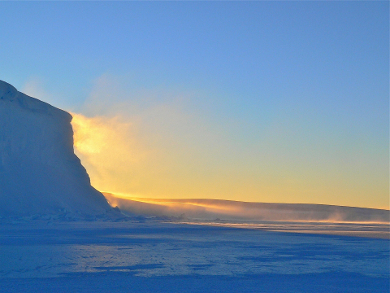In early 2018, Greenpeace researchers sampled seawater and snow along the coast of the Antarctic Peninsula using the “Arctic Sunrise” research vessel. All samples were examined for microplastics and for per- and polyfluorinated chemicals (PFCs).
Seven of the nine snow samples contained detectable concentrations of PFCs. These fluorine-containing chemicals, also known as perfluorinated and polyfluorinated alkyl substances (PFAS), are used, among other things, for functional clothing, but are also used in other consumer goods. The scientists suspect that the chemicals have reached the Antarctic via the air.
The most commonly detected PFC in the Antarctic snow was perfluorooctanoic acid (PFOA). This environmental toxin, which has been identified as a carcinogen, was detected in five out of nine snow samples in concentrations of up to 1.84 ng/L. These values are higher than those found in the snow of the Alps or in Sweden.
Seven of the eight seawater samples tested contained at least one microplastic fiber. The concentration ranged from 0.8 to 5.6 fibers per liter. Among the types of plastic were polyester and nylon, but also acetate, polypropylene, and polytetrafluoroethylene (PTFE). This is in spite of the fact that the so-called Antarctic Circumpolar Current separates the waters of the Southern Ocean from the World Oceans. That microplastic has found its way through this natural barrier is worrying.
- Microplastics and persistent fluorinated chemicals in the Antarctic,
Greenpeace International 2018.




